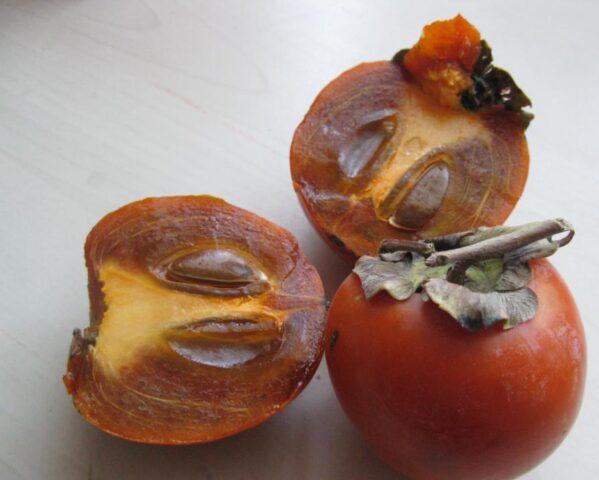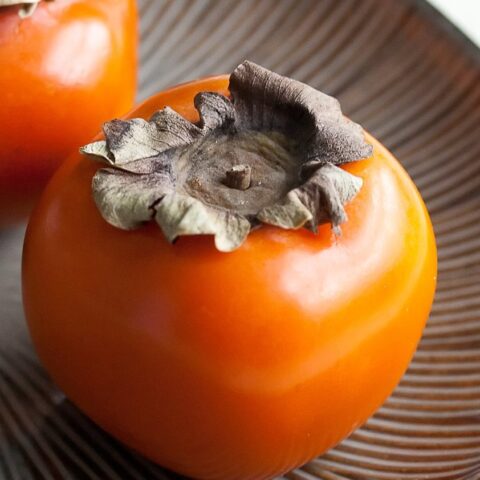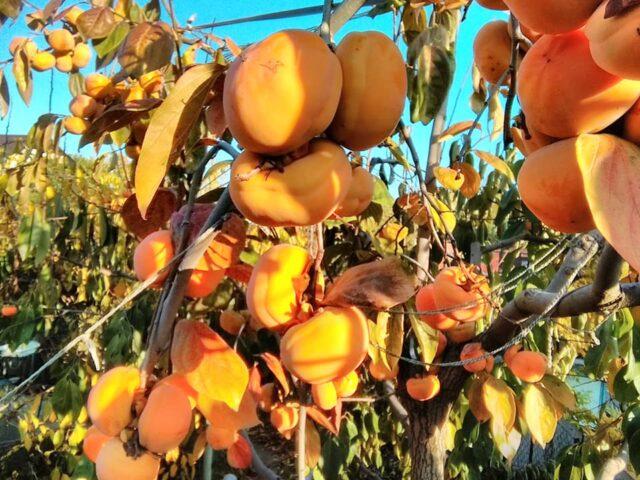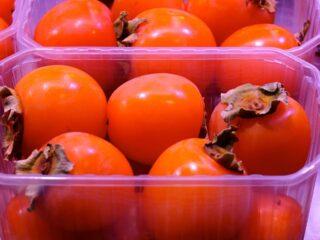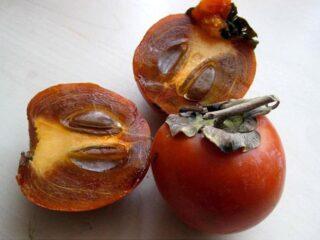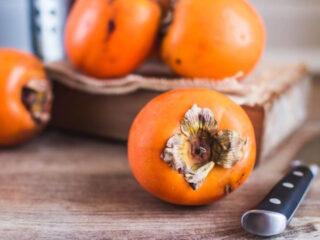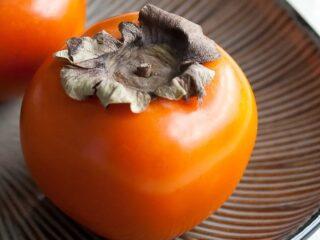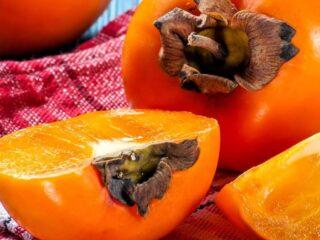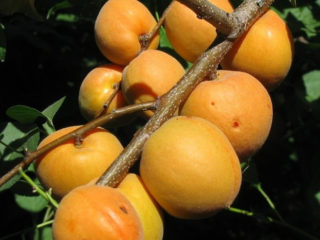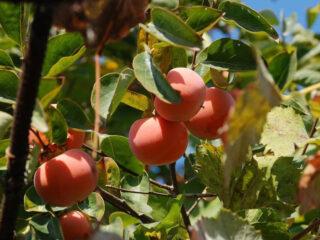Content
After pregnancy and childbirth, a woman needs to replenish lost energy. Her immunity is weakened, in order to restore the body's defenses, a balanced diet is required. And not the least place in it is given to fruits that have a rich chemical composition. But a nursing mother must take into account the child’s body’s reaction to new foods. Therefore, you need to figure out how useful persimmon is for breastfeeding, because it has an astringent effect. It is also worth knowing the harmful properties of the product.

Only ripe fruit can benefit a nursing mother and baby.
Can a nursing mother eat persimmons?
Persimmon is a southern fruit that appears in abundance on store shelves in the fall, when it is already slush and cold outside. Its value lies in its rich chemical composition and high taste when fully ripe. Moreover, in terms of the content of useful components, persimmons are superior to apples, bananas and tangerines.
According to experts, this fruit can be consumed by a nursing mother, but there are some restrictions.And to avoid undesirable consequences, you need to take them into account.
The benefits of persimmon during breastfeeding
This fruit is a storehouse of vitamins and minerals. At the same time, it has a low calorie content of only 53 Kcal per 100 products. This means that when consuming it, a nursing woman can strengthen her immune system without fear of gaining extra pounds. The high iron content in persimmon helps improve blood composition and increase its volume. It helps neutralize toxins in a woman’s body and speeds up recovery after childbirth.
The bactericidal effect of the fruit reduces the likelihood of developing mastitis and cystitis in a nursing mother. A complex of vitamins increases the body’s and baby’s resistance to viruses, infections, and colds. This fruit, according to experts, helps normalize the hormonal levels of a nursing mother and speed up metabolic processes.
In addition, the sweet taste of the fruit lifts your mood, despite the cold autumn days. This helps a woman cope more easily with lack of sleep and caring for her baby. Ripe persimmon contains large quantities of pectin and dietary fiber. They activate intestinal motility and help prevent constipation, which often occurs in a nursing mother after childbirth.
The fruit has a beneficial effect on the development and strengthening of the child’s health when it enters the child’s body with mother’s milk. Calcium is necessary for bone tissue, magnesium for the heart muscle, and fiber for normalizing the function of the digestive organs.
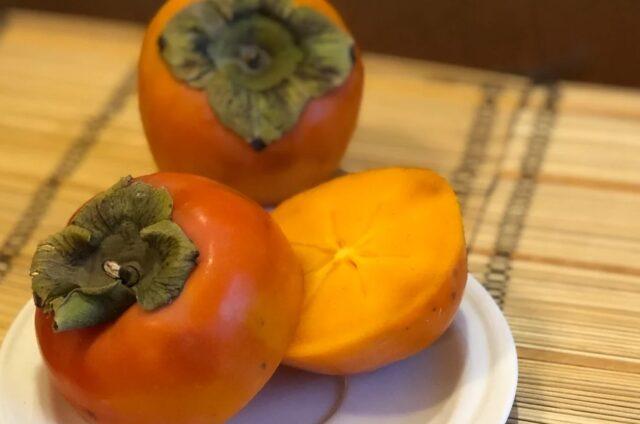
Persimmons are 78% water, which helps increase breast milk production
Harm of persimmon during breastfeeding
However, despite the benefits of the fruit, in some cases it can harm a nursing mother and baby.To avoid negative consequences after using it, you need to know the existing contraindications.
For a child
The high carotene content in the product is indicated by the yellow-orange color of the fruit. This plant pigment is considered a strong allergen. Therefore, the child’s body’s reaction to it can be expressed by rashes on the body and skin irritation.
Persimmon contains polyphenols, which are powerful antioxidants of natural origin. Their high concentration in the product can cause disruption of the digestive and urinary systems. After all, polyphenols require long-term fermentation, so they are more difficult for the baby’s body to absorb. This can cause stool upset, increased flatulence, intestinal colic, and nausea.
For Mom
This fruit contains a lot of sugars, so it is contraindicated for women suffering from diabetes. In some cases, persimmon can not only have a laxative effect, but also cause constipation. Such a reaction by a nursing woman’s body is possible when eating an unripe fruit, since it contains an excess of tannins.
Sometimes persimmon can cause intestinal obstruction. This is possible when the peristalsis of the organ is disrupted due to surgery. In this case, the fetal fiber forms a dense clot.
Features of consuming persimmons during breastfeeding
When used correctly, the product can only bring benefits.Therefore, a woman should familiarize herself in advance with the recommendations for introducing persimmon into her diet.
When can you eat persimmons after childbirth?
In the first month of breastfeeding, this product is not recommended to be included in the menu. Moreover, this rule applies to all women, even those who used it during pregnancy. After all, at an early stage of development, the baby’s internal systems are just adapting to new conditions, and any product other than breast milk can lead to negative health consequences.
You can try introducing fruit into the diet from the third month of a child’s life. By this time, his digestion is already returning to normal. This means the likelihood of indigestion is reduced.
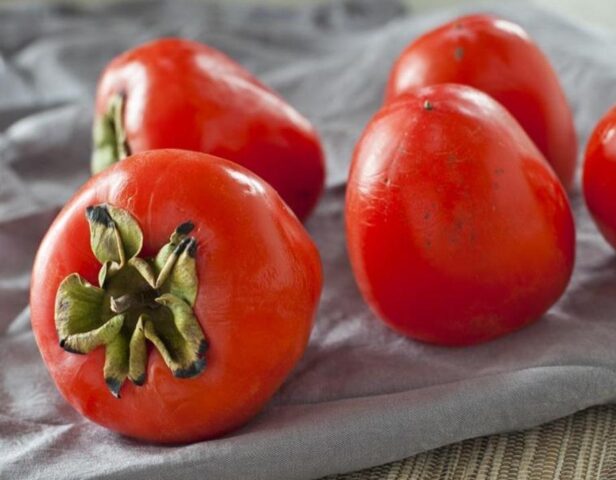
It is best to combine the introduction of persimmons into the diet of a nursing mother with the start of complementary feeding of the baby.
How many persimmons can you eat?
For the first time, you can eat a small piece of ripe fruit and monitor the child’s body’s reaction throughout the day. It is recommended to use the product in the first half of the day. If this does not lead to an allergic reaction, then you can gradually increase the dosage. The norm for persimmon consumption for a nursing mother is 1-2 ripe fruits no more than twice a week.
Which type of persimmon should a nursing mother choose?
There are many varieties of this fruit. And their main difference is in the content of tannins, which cause an astringent effect. For a nursing mother, types with a minimum concentration of these substances are suitable, which will avoid side effects.
Persimmon varieties that can be used for breastfeeding:
- Kinglet. A sweet fruit, the juicy pulp of which turns dark brown when ripe, for which the variety is also called chocolate.
The wren ripens at the end of October
- Sharon. A hybrid form of culture obtained by crossing persimmon and apple.The fruit is flattened, sweet, seedless, with crispy flesh.
Sharon has a mild taste without astringency
- Fuyu. The fruits are small and taste like sweet pumpkin. The flesh is crispy, without seeds.
The Fuyu variety is obtained on the basis of the Eastern type of crop
- Tamopan. The fruits are large, flat, with thick skin. When ripe they acquire a uniform orange color.
Tamopan fruits should be consumed after freezing.
Healthy recipes
A nursing woman can consume southern fruits not only fresh, but also dried. The process of preparing such fruits, unlike drying, takes place without exposure to heat. Moisture from the product evaporates under air currents. Drying requires a long time, but at the same time the persimmon remains soft and fully retains its nutritional and taste qualities.
Also, based on this fruit, you can prepare various dishes during lactation. Their use minimizes possible risks for the nursing mother and baby.
Casserole
You will need:
- 4 persimmons;
- 200 g sugar;
- 120 g flour;
- juice from half a lemon;
- 200 g sour cream;
- 3 eggs;
- a little butter.
Cooking process:
- Beat the eggs separately.
- Add sugar, lemon juice, flour, sour cream.
- Boil the fruits separately in sweetened water.
- After cooling, cut them into slices.
- Place the persimmons in the mold and fill with dough.
- Brush the top with butter.
- Bake for half an hour at 180°C.

The casserole can be sprinkled with powdered sugar when ready.
Fruit puree
You will need:
- 2 ripe persimmons;
- 2 bananas.
Cooking process:
- Remove seeds and skin from persimmons.
- Cut it and bananas into small pieces.
- Grind the fruit in a blender to a puree consistency.
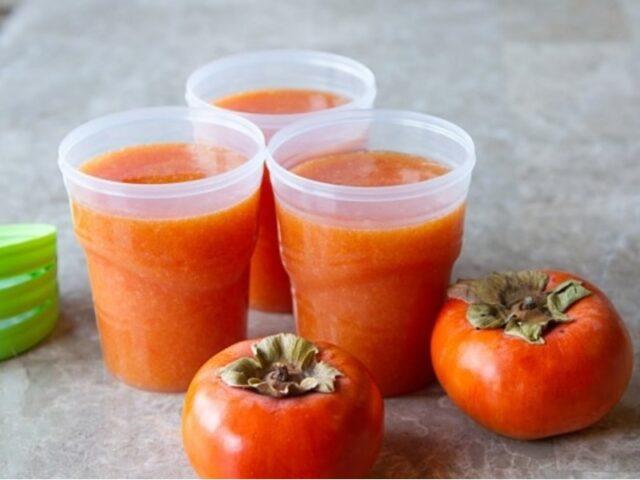
When serving the dish, garnish it with mint sprigs
Yogurt mousse with persimmon
You will need:
- 3 medium-sized persimmons;
- 200 ml natural yogurt;
- 50 g sugar;
- 400 ml 20% cream;
- 4 sheets of leaf gelatin.
Cooking process:
- Soak gelatin in water.
- Mix yogurt with sugar.
- Combine the resulting mass with the swollen gelatin, after draining the water.
- Leave for ten minutes.
- Beat the cream with a blender.
- Combine them with the yogurt mixture.
- Remove skins and seeds from fruits.
- Use a blender to beat them until smooth.
- Place persimmons and yogurt mixture in layers in bowls.
- Place in the refrigerator.
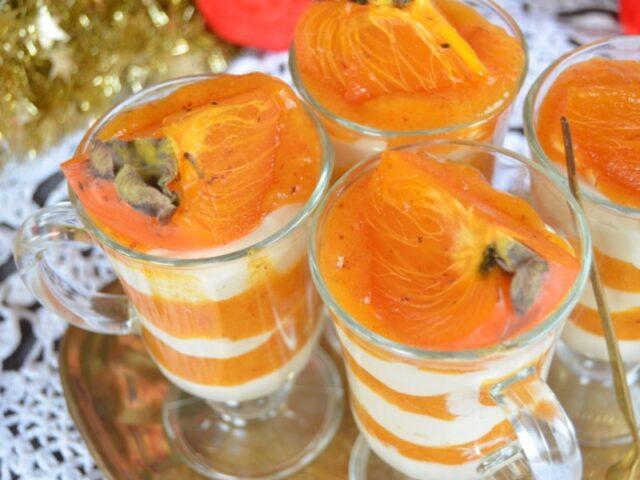
You can enjoy the mousse after three hours, when it hardens.
Conclusion
Persimmon during breastfeeding can bring benefits and harm to the nursing woman and baby. To eliminate the possibility of side effects, you need to introduce the product into the menu gradually in small doses. This will reduce the burden on the child’s digestive and immune system.
